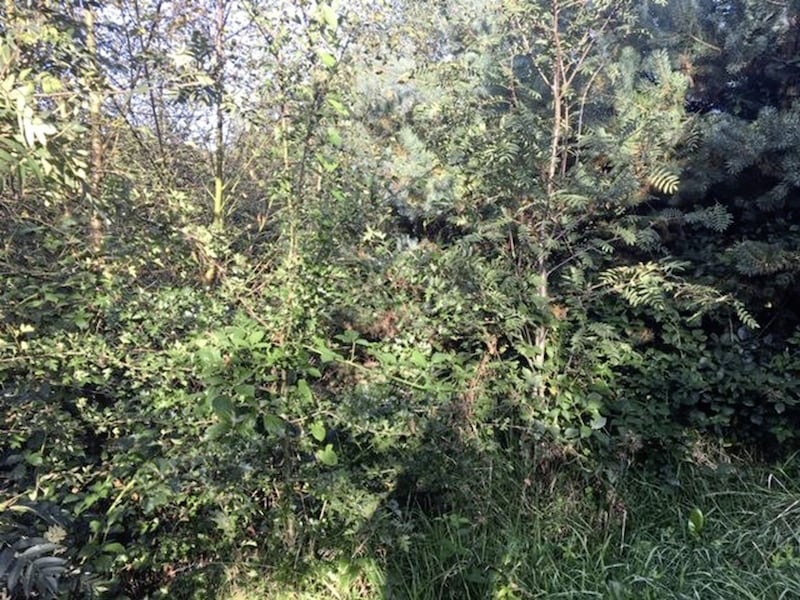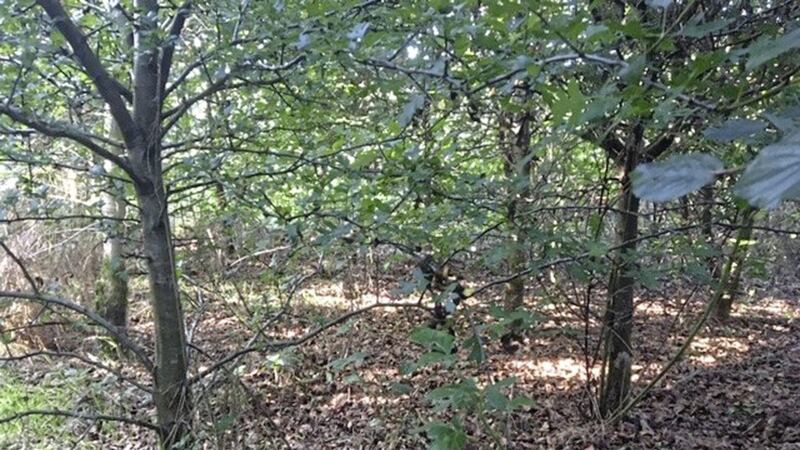AN ALDER planted as a bare-root sapling seven years ago and that had grown to 10 metres was felled by high winds a few weeks ago.
Felled is wrong word, but the three trunks which had grown upwards and sprouted a tangle of branches have been sent splaying in three different directions. The leaves on the branches are still growing and so it could continue to flourish and re-establish itself.
However, its location is just at the opening into the woodland I have been nourishing since 2012. Around two hundred saplings in a small neglected field have become a small native Irish forest in which birds nest and through which foxes prowl.
In the past two years, the ungainly grass which once grew there has started to be replaced by a forest floor – fallen leaves from the spreading canopy rotting into mulch over the previous two autumns. Mushrooms and fungi now spout in there, although beds of nettles and tangles of brambles also still thrive.
It has taken on an identity and at times I no longer recognise its layout from when I first started putting in the saplings that were no taller than my knee.
Now most of them tower over me, their branches tangling together so that some parts are only passable by stooping down low and trying to avoid getting snagged in the brambles.
The forest is too small to get lost in but now there are occasions when I find the paths that I had once tried to keep clear no longer exist, while other ones have emerged.
The ground was boggy in parts and the alder and willow have thrived. A few Scots pines died early on, probably because the soil I had put them in was too damp. Others, however, have thrived and now mesh into a dense thicket.
The mountain ash are tall and wispy, their red berries already in full autumn maturity. The silver birch are also pushing upwards to astounding heights in the space of just a few year.
A job lot of beech trees, which are not native to Ireland but have been an established part of our landscape for more than 400 years, form a long winding cluster within the forest. Also scattered in there are hawthorn, apple and pear.
The oak are taking their time but already you can see a stocky sturdiness that lends itself to longevity and if all goes well they will still be there in hundreds of years time. The lone yew in the centre of the forest could live for up to a thousand years.
I deliberately over-planted, knowing that as the trees grew they would start to become entangled with one another and compete for space and that they would eventually have to be thinned out. But I actually now find the thought of having to go in at some stage with an axe and start chopping some of them down quite upsetting.
The alder which has been damaged was at the main opening to my forest and now blocks one of the two paths that lead into it. I can still step over it, but if continues to grow this could become more difficult in coming years.
My aim is to keep it a mixed woodland that is dense but always accessible and some of the bigger trees will have to be culled to ensure their smaller neighbours can also thrive.
But then again, maybe future big winds will do the work for me. Hopefully not blocking the fragile pathways as they do so.









